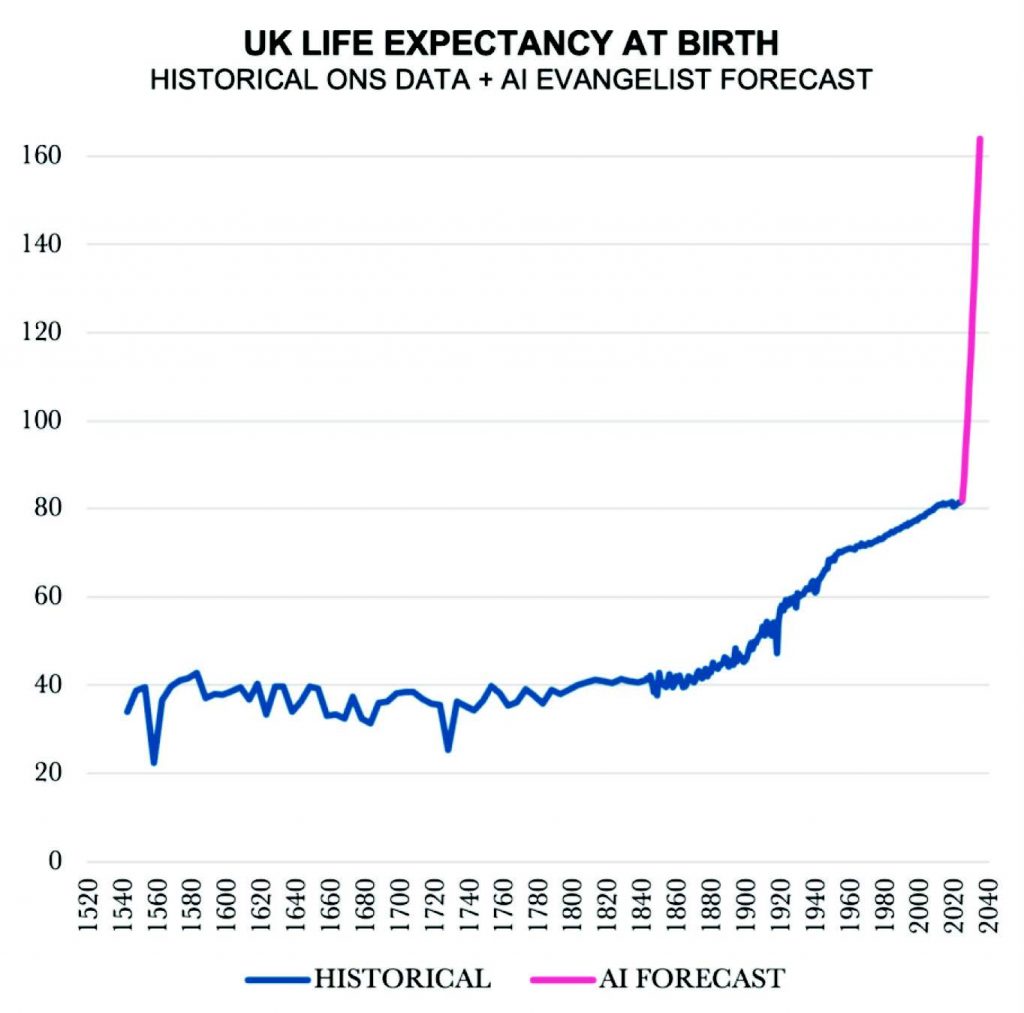Cassandra stood aloft Troy’s high walls, eyes wide with terror. “ Troy will burn,” she cried, voice raw from days of warning deaf ears. Below, cheers rose around the wooden horse, dragged with triumph through the gates. She turned away, tears tracing ancient truths down her cheeks. The gods had cursed her with foresight, but not belief. Her visions were clear, her voice ignored. As night fell, so did fate, and she alone mourned a city not yet ash…
As this article goes to print, dear reader, 933 days have passed since the flashpoint of the prevailing GenAi
(generative AI) boom. Industry commentators have cited this hype cycle as distinct from those before it, such as metaverse, blockchain and ESG, to name a few. The principal reason behind this is the tangible utility of GenAi tools. The above Cassandra vignette? AI-generated. It took about two seconds and an £18 monthly subscription. ChatGPT, the darling of the GenAi boom, reported 600 million unique monthly users in March 2025, and intends to reach 1 billion by year-end.1
“One of the more sensational predictions of 2025 came from Anthropic’s Dario Amodei, who has heralded an AI-enabled doubling of life expectancy within five-to-ten years.”
AI mania
AI mania has reached fever pitch. In the early months of 2025, we have witnessed skyrocketing search volumes and user activity for now-familiar tools such as ChatGPT, Cursor, Perplexity, etc. So, too, are we witnessing skyrocketing “AI anxiety”, as many influential figures herald mass unemployment, post-work civilisation, multi-centenary lifespans and telepathic communication. One of the more sensational predictions of 2025 came from Anthropic’s Dario Amodei, who has heralded an AI-enabled doubling of life expectancy within five-to-ten years. This would drastically outpace any innovation before it, including sanitation, penicillin, vaccination, and others. Such a discontinuity would have profound effects on the real estate sector—from multigenerational workplace factors (130-year-old colleagues) to mortgage terms (100-year mortgage…?), and housing demand (downsizing might happen at 130 instead of 60). It would also massively affect risk tolerance, due to the rising opportunity cost of dying young. Unfortunately for Millennials, that long-awaited inheritance might’ve just pushed back to the 22nd century—good luck getting on the housing ladder this century!

AI-enabled productivity
AI anecdotes tell us of month-long computer science tasks compressing to mere hours—spurring hyper-productivity for those with compatible skills and resources. Across the working population, this offers two alternative futures (or perhaps a mix of each). The first is a winner-takes-all outcome where one (or few) reap the economic benefits of their AI-augmented labour. In such a scenario, inequality is rampant. You might like to call it “hyper-capitalism”. Others have referred to it as “techno-feudalism”. Copywriters are on notice, as are graphic designers, property portals, chartered surveyors, doctors, solicitors, teachers, and CEOs. Heck, we’re all on notice, as any semblance of a meritocracy crumbles. The second framing follows a scarcely known 19th century phenomenon known as Jevon’s Paradox, where productivity gains enable tasks that were uneconomical in the past. In this scenario, demand for human labour accelerates rather than decelerates—just as demand for coal accelerated when steam engines became more efficient during the Second Industrial Revolution. Jevon’s Paradox is already unfolding in the field of investment research, enabling highly scalable investment sourcing and due diligence.
But how much steam is left in the AI engine?
The law of diminishing marginal utility implies that the AI boom can’t simply compound forever. Surely at some point things cool off, right? Well, not in the words of AI evangelists. In April, a group of AI researchers (including OpenAI alumni) published “AI 2027”, predicting runaway superhuman intelligence before the end of this decade. They chronicle a near-term future of mass unemployment and geopolitical crises.2 Elon Musk, Sam Altman, Dario Amodei, Jensen Huang, Mark Zuckerberg, Marc Andreessen and a score of other evangelists have hit the speaker circuit, heralding unimaginable near-term futures off the back of their technologies and/or investments. A sceptic might gesture to their surging valuations in parallel. Are these two phenomena linked?
Enter the “AI sceptics”
As time has passed, subtle signs of overhype have emerged in some corners of the present GenAi hype cycle. While Y Combinator’s most recent accelerator purportedly comprised 25 percent of start-ups with almost entirely AI-generated code bases, sceptics of AI-generated code have emerged. Criticisms include limited differentiation and bug-laden outputs requiring more time to fix than it would’ve taken to code manually. Similar issues have emerged among social scientists who have attempted to use large language models (LLMs) to speed up their analytics, only to find that “hallucinations” and erroneous interpolation have rendered the outputs useless. GenAi users report engaging in lengthy arguments with LLMs, calling out errors which are reinforced instead of remedied. AI agents are all the buzz in 2025, but Google’s Demis Hassabis warns of the compounding effect of errors within such systems, rendering their outputs useless.
AI is also enduring a deluge of litigation and legislative initiatives pertaining to intellectual property, privacy, trust and ethics. Finally, a Q1 2025 survey commissioned by Orgvue found that while 39% of business leaders had made employees redundant as a result of deploying AI, 55% of them regretted it within a year.3 This applies to tech firms themselves, with reports of hat-in-hand rehiring initiatives following AI-inspired mass layoffs of software engineers.
“Fear is a far stronger motivator than aspiration.”
Where do we find ourselves?
There’s little doubt that AI evangelists are hyping their technologies with well-known tactics. As prospect theory tells us, fear is a far stronger motivator than aspiration. This is a big part of why your news feeds are littered with dystopian predictions. Fear sells, and right now, fear is selling AI stocks to the tune of trillions. Our real predicament is deciphering the subtle truth within the hype. Just like the internet offered promise despite the exuberance of the dot-com bubble, so too will this genAi boom represent a new normal from which we will never return. Your organisation should certainly have an AI strategy, and lean into its advancements, but I wouldn’t throw in the towel in anticipation of a post-work civilisation just yet.
1 Duarte, F. 2025. Number of ChatGPT Users (March 2025). Exploding Topics. Published 23 April 2025.
2 Kokotajlo, D; Alexander, S; Larsen, T; Lifland, E & Dean, R. 2025. AI 2027. Published 03 April 2025.
3 Orgvue. 2025. Human-first, machine enhanced: From optimism to pragmatism in AI-driven workforce transformation. Published 29 April 2025.
This article was originally published in the Summer Issue of The Property Chronicle.







